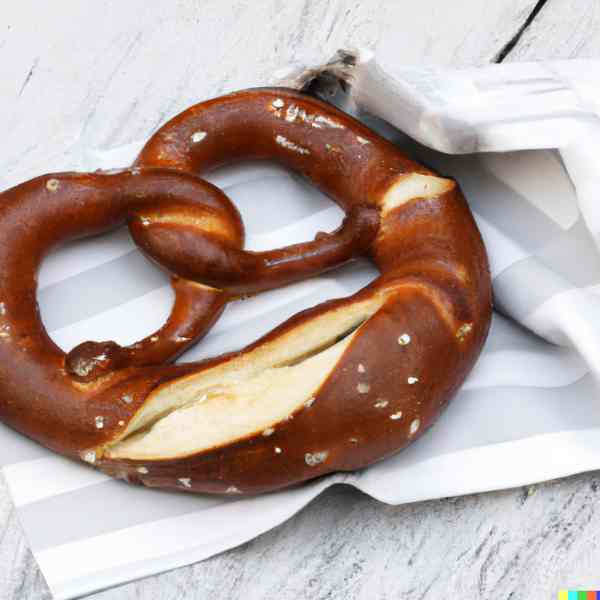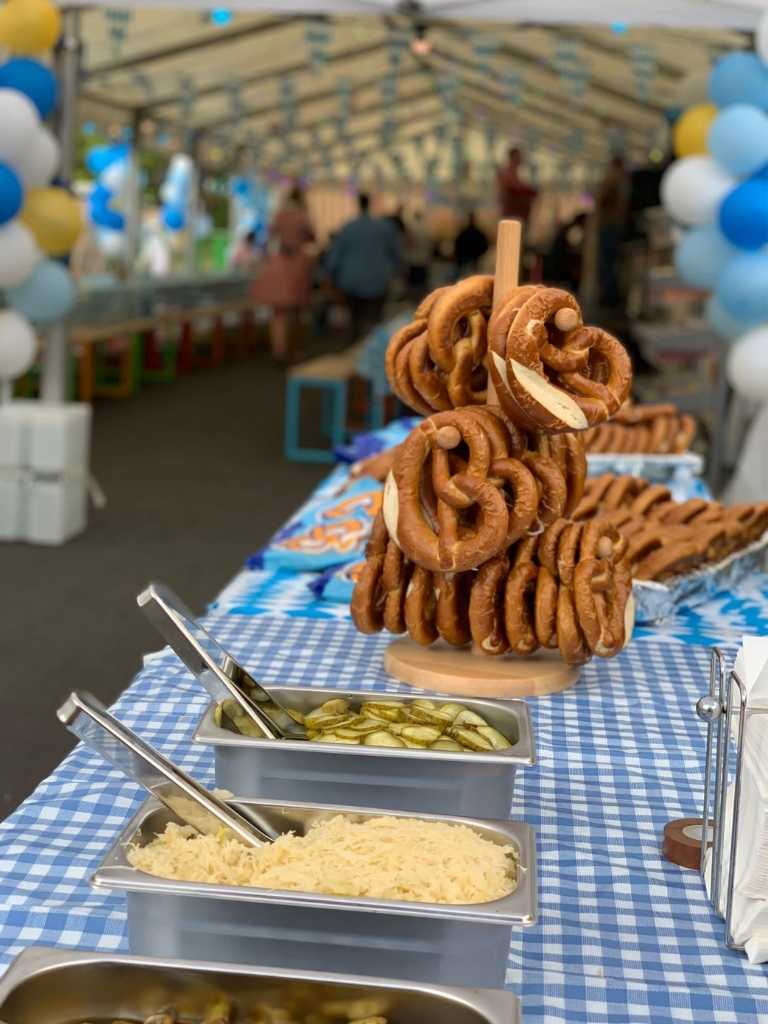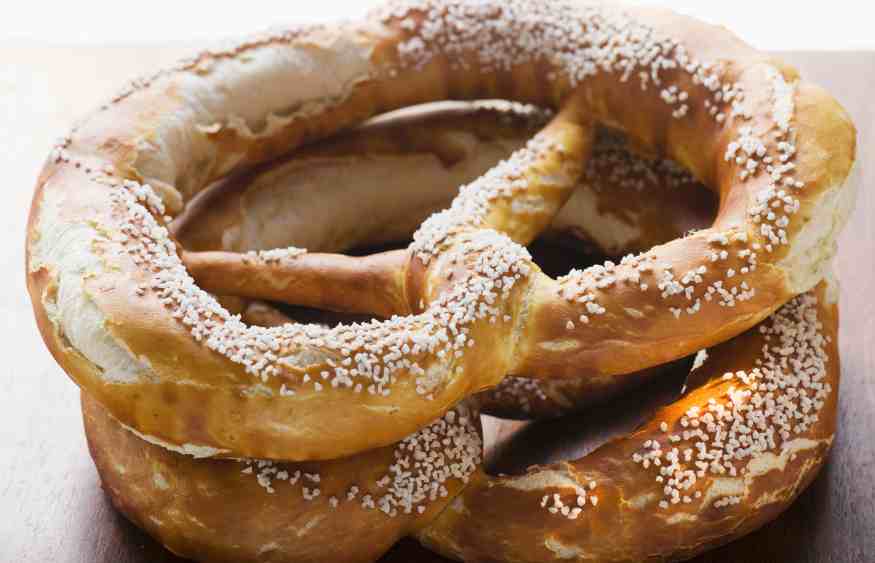A Twist of Tradition: The Fascinating History and Culture of the German Pretzel
The German pretzel, known as "brezel" in German, is a beloved treat that has been enjoyed in Germany and beyond for centuries. With its distinctive twisted shape and chewy texture, the pretzel has become an iconic symbol of German culture and cuisine.
In this article, we'll delve into the fascinating history and culture of the German pretzel, exploring its origins, traditional production methods, and its enduring popularity in modern-day Germany. Whether you're a foodie, a history buff, or simply curious about this beloved snack, we've got you covered.
So, grab a cold beer or a warm cup of coffee, and join us on a journey through the world of German pretzels.
The Origin of German Pretzels
The pretzel has a long and fascinating history that can be traced back to early Christianity in Europe. Some historians believe that pretzels were created by monks as a way to reward children who learned their prayers, while others suggest that the pretzel's twisted shape may have been inspired by the shape of a person crossing their arms in prayer.
Regardless of its exact origins, the pretzel quickly became a popular food in many parts of Europe, particularly in Germany. The first recorded mention of pretzels in Germany dates back to the 12th century, when they were sold by monks in the region of Bad Urach.
From there, pretzels quickly spread throughout Germany, becoming a staple food in many regions of the country. In the state of Bavaria, for example, pretzels are often served as a breakfast or snack food, and are typically accompanied by sweet mustard or obatzda, a Bavarian cheese spread.
Despite its popularity as a snack, the pretzel also has significant symbolic importance in German culture. In Bavaria, pretzels are often used as a symbol of love and commitment and are given as gifts to loved ones on special occasions. In other parts of Germany, pretzels are sometimes used as a good luck charm, with people carrying them in their pockets or hanging them on their doors.
Overall, the pretzel has a rich and complex history that reflects the many cultural and religious traditions that have shaped Europe over the centuries. Whether enjoyed as a simple snack or used as a symbol of love and good luck, the German pretzel remains a beloved and iconic part of German culture to this day.
Making German Pretzels
Traditional German pretzels are made with just a few simple ingredients: flour, water, yeast, salt, and a small amount of sugar. However, the way these ingredients are combined and processed is crucial to achieving the characteristic chewy texture and distinctive flavor of a true German pretzel.
The first step in making pretzels is to mix together the flour, water, yeast, salt, and sugar, and knead the resulting dough until it becomes smooth and elastic. This process can take anywhere from 10 to 15 minutes, and is often done by hand or using a traditional pretzel-making machine.
Once the dough is ready, it's time to shape the pretzels. This is done by first dividing the dough into small balls, and then rolling each ball into a long rope. The rope is then twisted into a pretzel shape, with the ends of the rope being crossed over each other twice before being pressed onto the bottom of the pretzel.
After shaping, the pretzels are dipped in a boiling water and baking soda solution, which gives them their distinctive crust and helps to lock in the pretzel's unique flavor. They are then baked in a hot oven until golden brown, typically for around 10 to 15 minutes.
While traditional pretzels are still made using these time-honored methods, there are also many modern variations on the classic snack. Some bakeries add different spices or flavors to the dough, while others offer pretzels that are stuffed with cheese or other fillings. Some even offer sweet pretzels, which are topped with cinnamon sugar or drizzled with icing.
Overall, making a true German pretzel is an art that requires skill, patience, and a deep respect for tradition. Whether made using traditional methods or modern variations, however, a good German pretzel is always a treat to savor and enjoy.
Traditional German Pretzels Recipe
Ingredients:
- 4 cups all-purpose flour
- 1 and 1/2 teaspoons salt
- 1 tablespoon sugar
- 2 teaspoons active dry yeast
- 1 and 1/4 cups warm water
- 1/4 cup baking soda
- Coarse salt for sprinkling
Directions:
- In a large mixing bowl, combine the flour, salt, sugar, and yeast.
- Add the warm water and stir to combine.
- Knead the dough on a floured surface for 10-15 minutes until smooth and elastic.
- Place the dough in a lightly greased bowl, cover with a damp towel, and let it rise for 1 hour.
- Preheat the oven to 425°F (220°C) and line a baking sheet with parchment paper.
- Bring a large pot of water to a boil, and add the baking soda.
- Divide the dough into 12 equal pieces.
- Roll each piece into a long rope, and shape into a pretzel.
- Drop each pretzel into the boiling water and baking soda mixture for 30 seconds, then remove with a slotted spoon and place on the prepared baking sheet.
- Sprinkle the pretzels with coarse salt, and bake for 10-12 minutes until golden brown.
Enjoy your homemade German pretzels warm, with your favorite dipping sauce or mustard!
Types of German Pretzels
While all German pretzels share the same basic shape and ingredients, there are many variations in size, texture, and flavor. From soft, fluffy pretzels to crispy, salty ones, there's a type of pretzel for every taste and occasion.
Soft Pretzels
Soft pretzels, or "brezen" in German, are the most popular type of pretzel in Germany. They are typically larger than other types of pretzels and have a soft, chewy texture. Soft pretzels are often eaten as a snack or as a light meal, and are typically accompanied by sweet mustard or obatzda, a Bavarian cheese spread.
Hard Pretzels
Hard pretzels, or "salzbrezeln" in German, are thinner and crunchier than soft pretzels. They are often eaten as a snack and are typically salted for added flavor. Hard pretzels are also a popular accompaniment to beer in Germany, and are often served in beer gardens and at Oktoberfest celebrations.
Pretzel Rolls
Pretzel rolls, or "brezenbrötchen" in German, are a type of small, soft pretzel that is shaped like a roll. They are often eaten for breakfast or as a snack, and are typically topped with butter or jam.
Laugenstangen
Laugenstangen, or "lye sticks" in English, are a type of long, thin pretzel that is similar to a baguette in shape. They are typically served as a snack or as an accompaniment to meals, and are often eaten with butter or a soft cheese spread.
Regional Differences
In addition to these common types of pretzels, there are also many regional variations in pretzel shapes and styles. For example, in the state of Thuringia, pretzels are typically shaped into small rings, while in Bavaria, pretzels are often large and braided.
In the state of Baden-Württemberg, pretzels are sometimes stuffed with ham and cheese or other savory fillings, while in the city of Frankfurt, pretzels are often topped with caraway seeds for added flavor.
Overall, the variety of German pretzels is a testament to the versatility and adaptability of this iconic snack. Whether enjoyed in its traditional soft or hard form, or as a creative variation on the classic pretzel shape, a good German pretzel is always a treat to savor and enjoy.
In Germany, pretzels are more than just a snack – they're a cultural institution. From the traditional accompaniments to the etiquette of eating a pretzel, there are many customs and traditions surrounding this beloved treat.
In this section, we'll take a closer look at how pretzels are served and eaten in Germany, and explore their cultural significance in German cuisine and society.
Pretzels in Modern German Culture
Despite their long history, pretzels remain a popular snack in modern-day Germany. From street vendors to upscale restaurants, pretzels can be found all over the country, and have even made their way into German media and entertainment.
Popularity of Pretzels
In modern-day Germany, pretzels remain a beloved snack that can be enjoyed in a variety of settings. Street vendors and food trucks often sell pretzels as a quick and easy snack, while bakeries and cafes offer them as a more substantial option.
Pretzels are also a popular accompaniment to beer, with many bars and pubs serving them alongside cold pints of beer. In addition, pretzels are often included in traditional German meals, such as sausages and sauerkraut.
Conclusion
In this article, we've explored the fascinating history and culture of the German pretzel, from its origins in Europe to its enduring popularity in modern-day Germany.
Whether you're a food lover, a history buff, or simply curious about this iconic snack, we hope you've enjoyed learning about the rich traditions and customs that surround the German pretzel.
Learn about the German dessert Kaiserschmarrn and also about the famous apple strudel.
Resources
https://www.boyercandies.com/
https://en.wikipedia.org/
https://www.history.com/
https://www.pretzels.com/
https://sallysbakingaddiction.com/
https://handletheheat.com/





